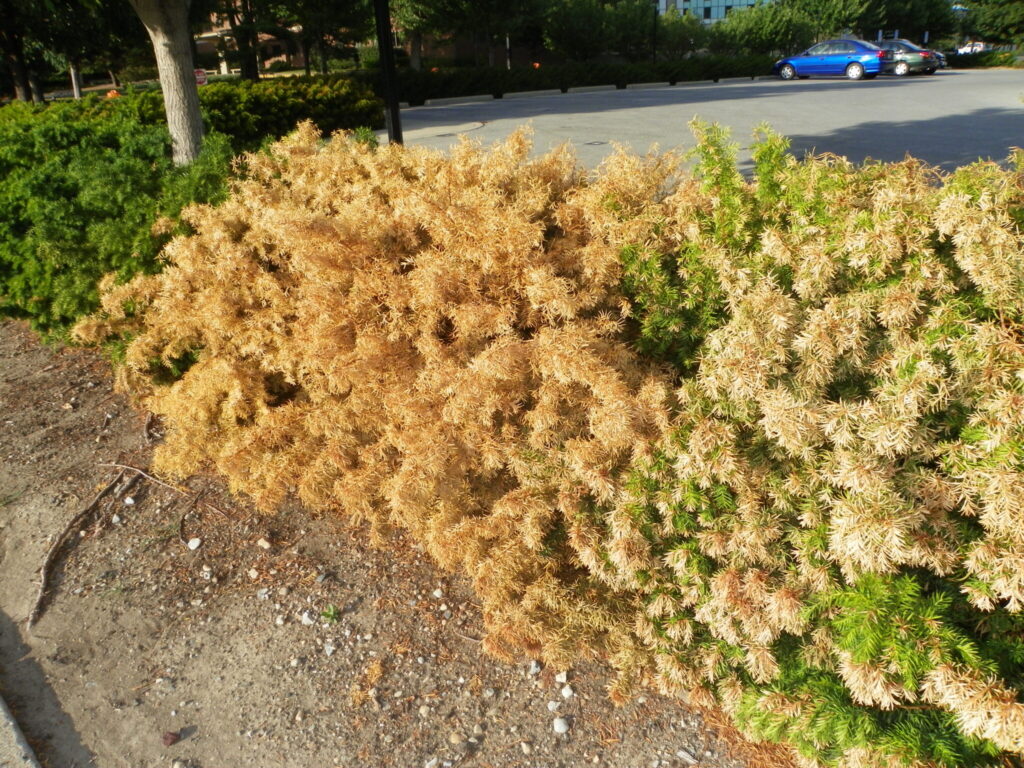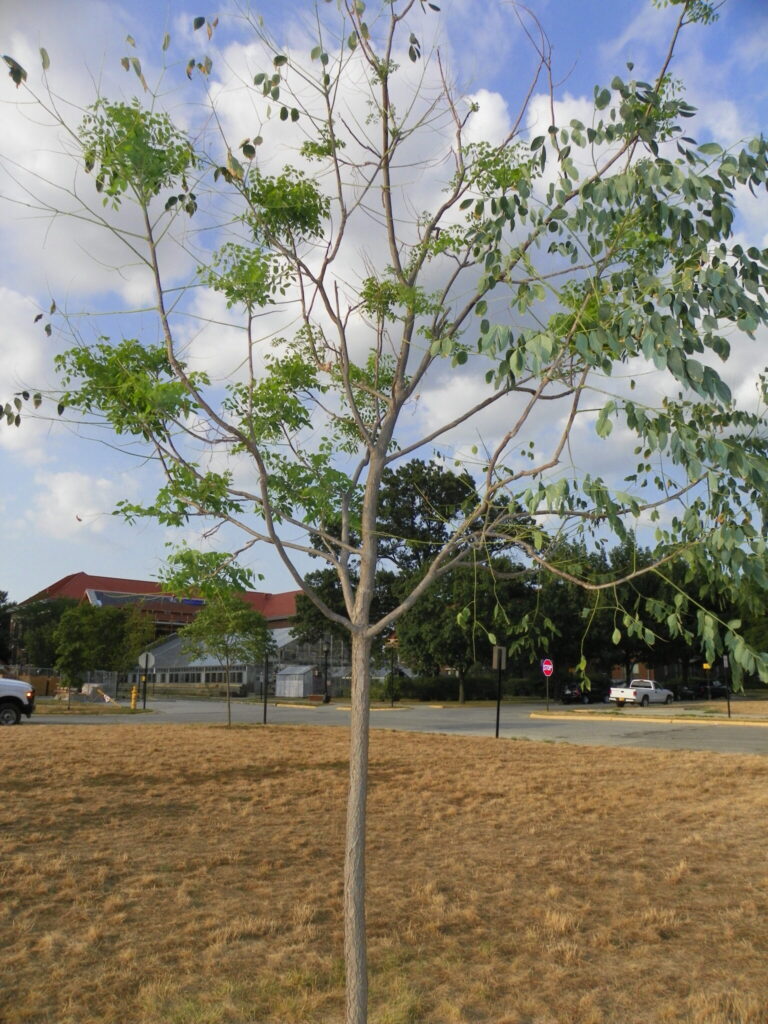Depending on where you are located in the Midwest, rainfall in 2021 has either been too much or too little. This trend was forecasted several years ago by climatologists, in that more droughts and more floods are projected as the ramifications of climate change take shape in the future. Though this statement doesn’t make logical sense on the surface, the fact that longer periods of drought are occurring and more rainfall per event have been occurring on a regular basis in many locations around the Midwest, makes this statement very accurate. We wrote about this phenomenon previously: https://www.purduelandscapereport.org/article/feast-or-famine-landscape-plants-are-struggling-due-to-precipitation-extremes/
- Figure 1. Drought conditions caused this Taxus to die.
Precipitation extremes can cause significant stress-related issues to landscape plants, including leaf drop, reduced uptake of nutrients, salinity toxicity, anaerobic soil conditions, and reduction in cold hardiness, among others. In addition, when a plant is under stress via abiotic issues, insects and disease will proliferate. The ramifications of too much or too little water has the potential to extend into multiple growing seasons, which increases the chances of suffering from a biotic problem and general decline.
In years that a drought of any magnitude occurs, there is talk of planting more drought-tolerant plants for a drying climate. This would be a mistake because those plants will not perform in years that produce more rainfall.
The varying amount of rain is significant around Indiana, as Table 1 demonstrates. It’s important to keep in mind that even though things may be dry in your area in 2021, 2022 may present significant rainfall. By installing plants that are more tolerant of extreme events, there will be less plant stress and plant loss.
Fort Wayne Lafayette Evansville Indianapolis
September 3.78 2.75 4.82 5.36
August 2.55 2.75 6.75 1.89
July 4.61 4.61 4.11 6.93
- Figure 2. Drought can cause leaf drop as a response to a lack of water.
If you are in an area with a lack of rainfall, make sure to irrigate this fall until leaf drop. This will allow the plant to recover a bit before dormancy occurs. Continue to water in the spring, if needed, to reduce stress into the growing season.
In areas with too much rainfall, consider installing drain tile or grading the area to remove water away from the landscape.
Related links:
Why fall color is sometimes a dud https://www.purduelandscapereport.org/article/why-fall-color-is-sometimes-a-dud/
Water now to minimize winter injury. https://www.purduelandscapereport.org/article/water-now-minimize-winter-injury/
Drought? Don’t forget the trees! https://www.extension.purdue.edu/extmedia/FNR/FNR-483-W.pdf
How do trees use water? https://www.purduelandscapereport.org/article/how-do-trees-use-water/
Stress related conifer dieback https://www.extension.purdue.edu/extmedia/ID/ID-477-W.pdf

